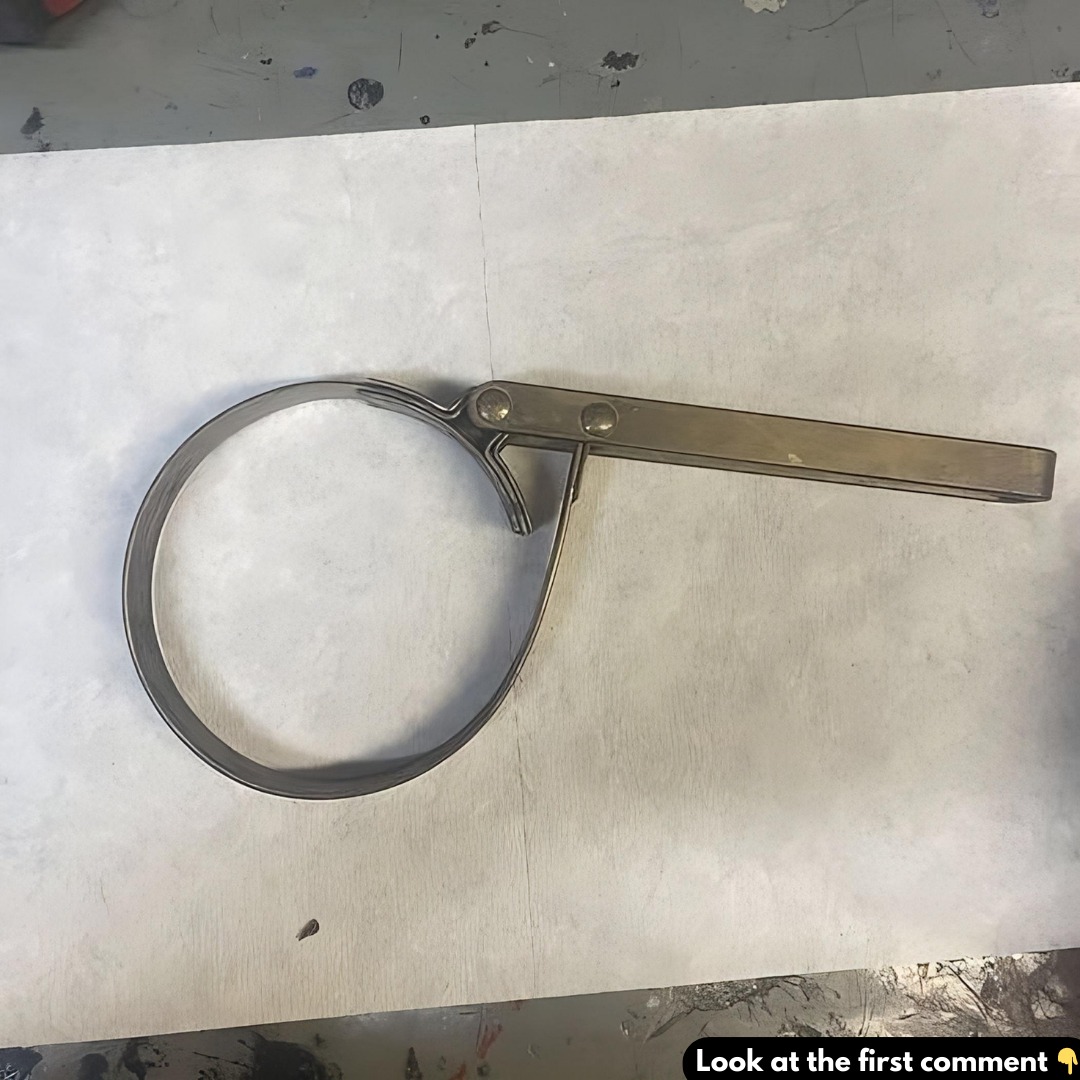As automobiles gained popularity in the early 20th century, regular vehicle maintenance became a necessity. Among the many aspects of car upkeep, oil changes took on particular importance. As mechanics realized the critical need to replace oil filters regularly to keep engines running smoothly, they also recognized the challenge of removing and replacing these filters efficiently. Enter the oil filter wrench—a simple yet essential tool that changed the way car maintenance was performed.

The Early Development of the Oil Filter Wrench
The oil filter wrench was born out of necessity during the automobile boom of the early 1900s. As more people purchased cars, routine maintenance like oil changes became a common task. Oil filters, which trap contaminants such as dirt and metal particles, play a crucial role in keeping engine oil clean. However, early on, mechanics struggled to remove filters, especially since they were tightly secured in hard-to-reach areas under the engine.
To meet this challenge, mechanics needed a tool that could provide the leverage required to easily loosen and tighten these filters. The first oil filter wrenches were basic but effective—usually consisting of a strap or chain that wrapped around the filter. This design allowed mechanics to apply torque and easily remove or replace the filters. Though simple, these early wrenches dramatically improved efficiency, helping to make routine car maintenance more accessible to both mechanics and vehicle owners.
How the Oil Filter Wrench Works
At its core, the oil filter wrench is a straightforward tool designed to loosen or tighten oil filters. Filters can often become stuck due to the buildup of heat, dirt, or oil residue, making them difficult to remove by hand. This is where the oil filter wrench comes in, providing the necessary grip and torque to free even the most stubborn filters.
The earliest models of the wrench featured a loop or chain that would wrap around the filter. With the handle of the wrench, the mechanic could apply leverage to break the seal and twist the filter off. This simple yet effective design revolutionized the process of changing oil filters, making it faster and more efficient.
As time went on, the design of the oil filter wrench evolved, offering mechanics various tools suited for different filters:
- Strap Wrenches: Featuring a flexible strap that tightens around the filter, these wrenches provide an adjustable grip and are ideal for larger filters.
- Cup Wrenches: Designed to fit specific filter sizes, these wrenches offer a precise fit and minimize the risk of damaging the filter.
- Claw-Type Wrenches: These feature a set of claws that grip the filter tightly, making them especially useful for filters that are stuck or located in difficult-to-reach areas.
Each type of wrench serves different purposes, giving mechanics and car owners flexibility when working on different vehicles.
The Evolution of Oil Filter Wrenches
While early oil filter wrenches were functional, they were also rudimentary. Over time, manufacturers improved their designs to offer better grip, precision, and convenience. Some of the key innovations include:
- Adjustable Wrenches: These allow mechanics to use one tool for various filter sizes, adding versatility to their toolkits.
- Ergonomic Handles: Many modern wrenches now come with padded or contoured handles, reducing hand fatigue and improving comfort during use.
- Ratchet Attachments: Some wrenches are equipped with ratcheting mechanisms, enabling faster and more efficient filter removal.
These innovations have made oil filter wrenches even more reliable, enhancing vehicle maintenance and making oil changes quicker and easier.
The Lasting Legacy of the Oil Filter Wrench
Despite advancements in automotive technology, the vintage oil filter wrench still holds a special place in the world of car repair. Enthusiasts of classic cars often seek out these older tools, appreciating their craftsmanship and the manual skill they represent. For many collectors, early oil filter wrenches symbolize the evolution of car maintenance during a time when mechanics relied more on their hands and tools than on modern technology.
For those who work on vintage cars, using an original oil filter wrench adds an extra layer of authenticity to the experience, connecting them to an era when car repairs were more hands-on and required greater physical effort.
The Importance of the Oil Filter Wrench Today
Even as oil filter technology evolves—with some modern vehicles featuring long-lasting or permanent filters—the oil filter wrench remains an essential tool. Its role in maintaining clean engine oil and ensuring engine performance is critical, making it a staple in every mechanic’s toolbox.
Whether in professional auto shops or in the hands of DIY car enthusiasts, the oil filter wrench continues to play a vital role in vehicle upkeep. Its simplicity, reliability, and efficiency make it indispensable, especially during routine oil changes, one of the most common forms of car maintenance.
A Tool That Stands the Test of Time
The oil filter wrench may have started as a simple solution to a growing need, but its impact on the automotive industry is undeniable. Over the years, it has evolved into a symbol of innovation and craftsmanship, helping to make car maintenance more efficient. Whether you’re a professional mechanic, a car enthusiast, or someone who enjoys working on your vehicle, the oil filter wrench remains an invaluable tool.
As the automotive industry continues to advance, it’s clear that reliable tools like the oil filter wrench will remain indispensable, highlighting the creativity and ingenuity of early mechanics and the timeless value of hands-on tools.





